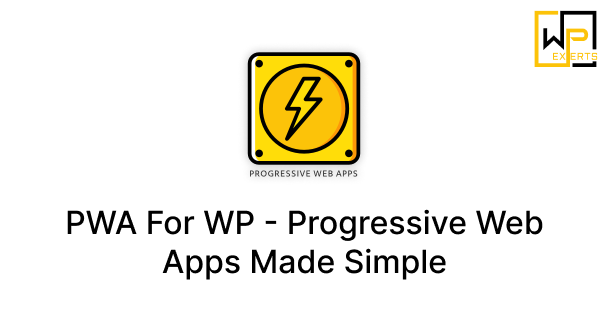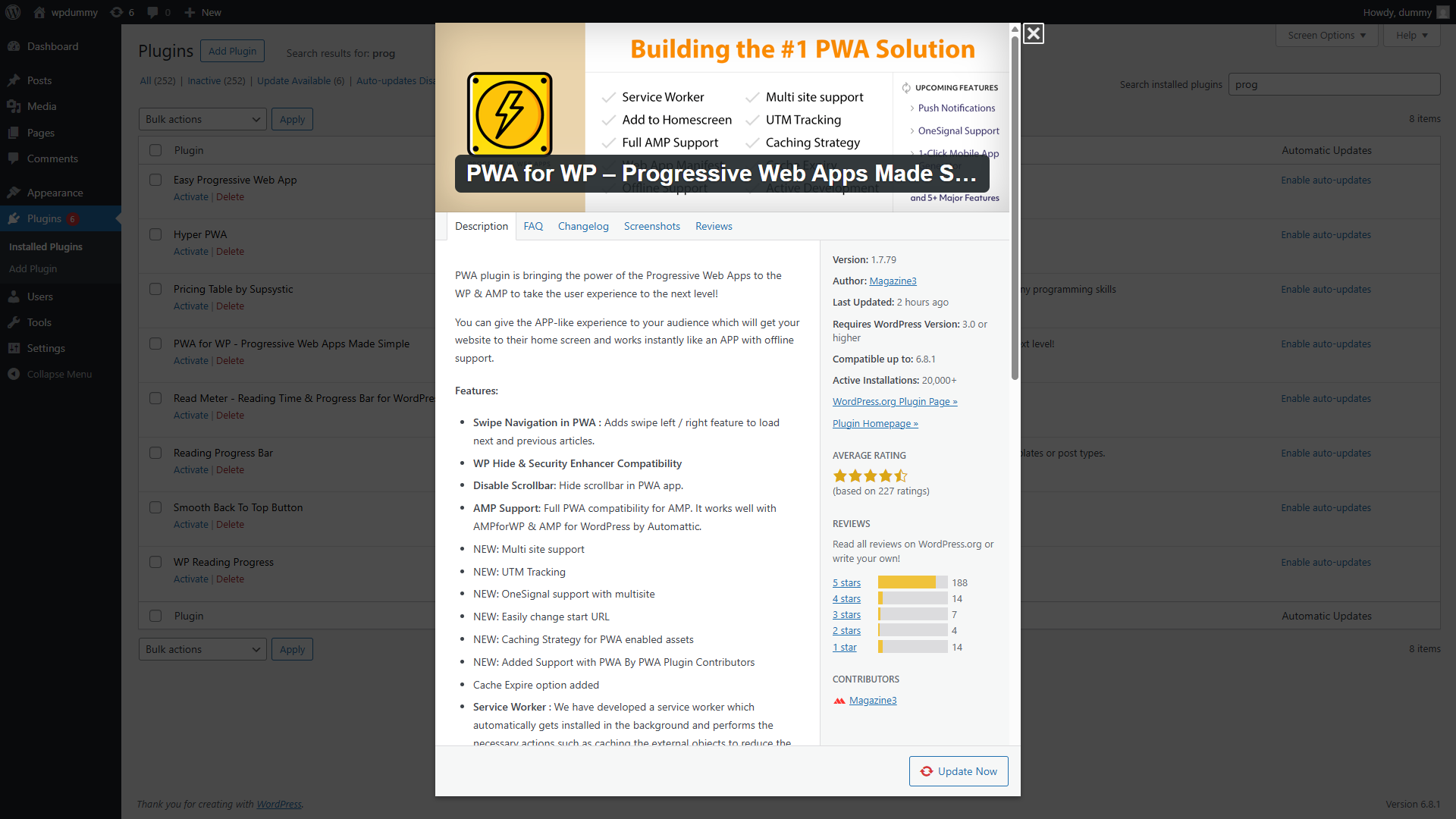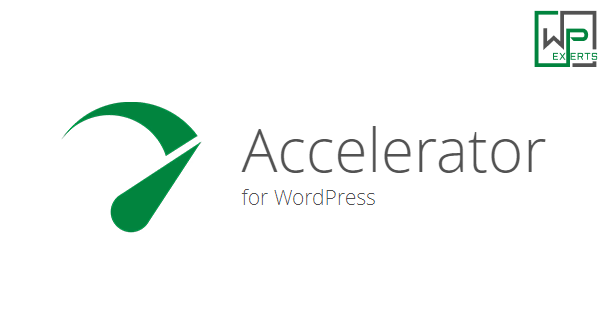PWA for WP – Progressive Web Apps Made Simple: A Comprehensive Overview
In today’s mobile-first digital landscape, user experience plays a critical role in website performance, engagement, and retention. As mobile usage continues to outpace desktop browsing, website owners must ensure that their sites perform flawlessly across all devices and network conditions. Progressive Web Apps (PWAs) represent a modern approach to web development that combines the best features of web and mobile applications.
The WordPress plugin “PWA for WP – Progressive Web Apps Made Simple” simplifies the process of converting any WordPress website into a PWA, offering numerous features that enhance performance, engagement, and user satisfaction. This article provides a deep dive into the plugin, its features, setup process, benefits, and how it impacts WordPress-based websites.

What is a Progressive Web App (PWA)?
A Progressive Web App is a web application that uses modern web capabilities to deliver an app-like experience to users. PWAs are fast, reliable, and engaging. They can work offline, send push notifications, and be installed on a user’s home screen without needing to go through app stores.
The core principles of a PWA include:
- Reliability: It works offline or on low-quality networks.
- Speed: It loads quickly, even under uncertain network conditions.
- Engagement: It feels like a native app with a rich user interface and seamless interactions.
About “PWA for WP – Progressive Web Apps Made Simple” Plugin
Plugin Name: PWA for WP – Progressive Web Apps Made Simple
Author: Magazine3
Active Installations: 70,000+
Ratings: 4.5+ stars
Requires WordPress Version: 4.6 or higher
Compatible Up To: Latest WordPress versions
PHP Version Required: 5.6 or higher
The plugin is designed to bring the power of PWAs to WordPress websites with minimal configuration. It’s especially useful for bloggers, businesses, and e-commerce stores using WooCommerce who want to boost user engagement and performance.
Key Features
- Offline Support
- Enables offline browsing of previously visited pages.
- Uses service workers to cache essential files and pages.
- Web App Manifest
- Automatically generates the manifest file needed for PWA.
- Allows customization of app name, icon, background color, and theme color.
- Add to Home Screen Prompt
- Prompts users to install the web app on their device.
- Works on Android and Chrome-based browsers.
- Service Worker
- Automatically registers a service worker for caching assets.
- Offers both default and custom caching strategies.
- Push Notifications (Premium)
- Integrates with OneSignal to send web push notifications.
- Helps in increasing return visits and engagement.
- Multisite Support
- Compatible with WordPress Multisite installations.
- Full AMP Support (Accelerated Mobile Pages)
- Integrates with AMP plugins to make AMP pages PWA compatible.
- Supports both official AMP plugin and AMP for WP plugin.
- Caching Strategies
- Cache-first, Network-first, and stale-while-revalidate options available.
- Helps in optimizing load time and reducing server requests.
- Support for Custom Post Types
- Works not only with posts and pages but also with custom post types.
- Data Analytics
- Compatible with Google Analytics and other major tracking tools.
Premium Add-Ons and Features
While the free version offers robust features, the plugin also provides premium extensions to unlock additional capabilities, including:
- Advanced Caching Strategies
- Offline Forms
- Pull to Refresh
- Background Sync
- Splash Screen Customization
- Full-screen Mode
- Custom PWA Icons per Page/Post
- Multilingual Support
- WooCommerce Compatibility
Benefits of Using PWA for WP Plugin
- Improved Performance
- PWAs load faster due to caching and service worker capabilities, which enhance Core Web Vitals scores and SEO.
- Offline Access
- Users can access content even without an internet connection, which is great for content-heavy websites.
- Enhanced User Engagement
- With features like push notifications and home screen installation, PWAs can drive repeat traffic.
- Better SEO and Discoverability
- Since PWAs are still web-based, they remain indexable by search engines and benefit from SEO best practices.
- Cost-Effective Alternative to Native Apps
- Delivers a near-native experience without investing in iOS or Android development.
- Cross-Platform Compatibility
- Works across multiple devices and browsers with consistent performance.
Installation and Setup Guide
Step 1: Install the Plugin
- Navigate to Plugins > Add New in your WordPress dashboard.
- Search for “PWA for WP – Progressive Web Apps Made Simple.”
- Click Install Now and then Activate.
Step 2: Configure Basic Settings
- Go to PWA > Settings.
- Customize:
- App Name
- Short Name
- App Icon (512×512 recommended)
- Theme and background colors
Step 3: Configure Service Worker and Caching
- Enable the service worker.
- Choose caching strategies appropriate for your content (e.g., cache-first for static content).
Step 4: Offline Page
- Set up a custom offline fallback page (e.g., “Sorry, you’re offline” message with basic navigation).
Step 5: Add to Home Screen
- Ensure “Add to Home Screen” is enabled.
- Test it on a supported device/browser.
Step 6: Test the PWA
- Use Chrome DevTools > Application tab to check manifest and service worker status.
- Use Lighthouse (in Chrome DevTools) to audit PWA compliance.
Use Cases and Compatibility
- Blogging Websites: Authors and publishers can engage users with offline access to articles.
- E-Commerce (WooCommerce): Improve checkout speed, re-engage users with push notifications, and offer a smoother mobile shopping experience.
- News Portals: Users can install the news site on their phones and get real-time updates via push notifications.
- Educational Platforms: Ensure learners can access course content even in offline mode.
Common Issues and Troubleshooting
- Service Worker Not Registering: Ensure HTTPS is enabled (required for service workers).
- Manifest Errors: Check for missing icons or invalid JSON formatting.
- Add to Home Screen Not Prompting: Happens if site doesn’t meet all criteria (secure, manifest, service worker, engagement threshold).
- Push Notifications Not Working: Confirm OneSignal integration and browser permission.
Conclusion
The PWA for WP – Progressive Web Apps Made Simple plugin is an essential tool for WordPress site owners looking to bridge the gap between web and native app experiences. With minimal configuration and strong support for both AMP and WooCommerce, it empowers websites to become faster, more engaging, and more reliable — all while improving SEO and user retention.
Whether you’re a content creator, online store owner, or business website administrator, adopting PWA technology through this plugin can significantly elevate your site’s capabilities. The blend of free core features and extendable premium modules makes it suitable for a wide range of applications.





